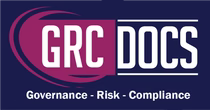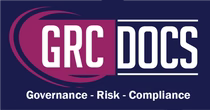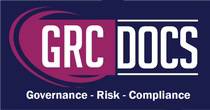The NIST Guide to IoT Security: Keeping Your Smart Devices Safe
Welcome to the digital age, where everything from your fridge to your toothbrush is connected to the internet. The Internet of Things (IoT) has revolutionized the way we live, making our lives more convenient and efficient. But with great power comes great responsibility, and it's important to ensure the security of these smart devices. That's where the National Institute of Standards and Technology (NIST) comes in.

What is NIST?
NIST, or the National Institute of Standards and Technology, is a U.S. government agency that plays a key role in advancing measurement science, standards, and technology to enhance economic security and improve quality of life. In the realm of digital security, NIST is especially known for setting cybersecurity requirements that help organizations protect their information systems and data from cyber threats. One of NIST's most recognized contributions is the NIST Special Publications (NIST SP) series, which includes detailed guidelines and best practices for implementing strong cybersecurity frameworks. For example, NIST SP 800-53 outlines security and privacy controls for federal information systems, while NIST SP 800-171 provides guidance for protecting controlled unclassified information (CUI).
As the number of connected devices continues to grow, NIST has also taken significant steps to address security challenges specific to the Internet of Things (IoT). Through its IoT Cybersecurity Guidance, NIST provides recommendations for manufacturers and users of IoT devices to minimize vulnerabilities and manage risks effectively. This effort is part of its broader Cybersecurity for IoT Program, which aims to improve the security of IoT ecosystems by developing standards, frameworks, and best practices. The NIST IoT Cybersecurity guidance focuses on device security capabilities, data protection, software updates, and user access control, offering practical tools for both developers and IT professionals to secure IoT deployments.
What is NIST IoT Standard Security?
NIST IoT Standard Security refers to the set of cybersecurity guidelines and recommended practices developed by the National Institute of Standards and Technology (NIST) specifically for securing Internet of Things (IoT) devices and systems. As IoT devices become increasingly integrated into homes, businesses, and critical infrastructure, the need for strong, standardized security measures has become essential. The NIST IoT standard security framework addresses this need by outlining key cybersecurity capabilities that IoT device manufacturers and system integrators should implement, such as device identity, data protection, secure software updates, and access control.
The NIST IoT standard security principles are part of a broader initiative under NIST’s Cybersecurity for IoT Program, which aims to provide clear and practical guidance to ensure that IoT products are secure by design. One of the core documents, NIST SP 800-213, along with others in the NIST SP (Special Publications) series, delivers comprehensive IoT cybersecurity guidance for both federal agencies and private sector organizations. These standards help align device security with overall organizational cybersecurity requirements, ensuring a cohesive defense against growing cyber threats in the IoT landscape.
The Risks of IoT Devices
While IoT product devices offer convenience and connectivity, they also introduce new security risks. These risks can potentially compromise the privacy and safety of users. Some common risks associated with IoT devices include:
1. Inadequate authentication: Many IoT devices have weak or no authentication mechanisms, making it easier for hackers to gain unauthorized access.
2. Lack of encryption: Without proper encryption, the data transmitted between IoT devices and their associated applications can be intercepted and manipulated.
3. Vulnerability to malware: IoT devices are often vulnerable to malware attacks due to outdated firmware and inadequate security measures.
4. Poorly implemented security: Manufacturers may not prioritize security during the development process, leaving devices susceptible to attacks.
NIST's Recommendations for IoT Security
NIST's guide provides a set of recommendations to address the unique security challenges posed by IoT product devices. These recommendations are designed to be practical, scalable, and adaptable for different types of IoT systems. Here are some key recommendations:
1. Device identification and authentication: Implement strong authentication mechanisms to ensure that only authorized users can access the device.
2. Secure communication: Use encryption protocols to protect the confidentiality and integrity of data transmitted between IoT devices and their associated systems.
3. Software/firmware updates: Regularly update and patch the software and firmware of IoT devices to address security vulnerabilities and protect against emerging threats.
4. Monitoring and response: Implement mechanisms to detect and respond to security incidents in real-time.
These are just a few examples of the recommendations outlined in the NIST guide. By following these best practices, manufacturers and users can significantly improve the security posture of their IoT devices.
Benefits of Implementing NIST IoT Security Guidelines
Implementing NIST's IoT security guidelines offers several benefits for both manufacturers and end-users:
1. Enhanced security: By following NIST's recommendations, manufacturers can build more secure IoT system devices, reducing the risk of unauthorized access and data breaches.
2. Improved consumer trust: When consumers know that a product meets NIST's security standards, they are more likely to trust and purchase it.
3. Increased device lifespan: Regular software and firmware updates, as recommended by NIST, ensure that IoT devices remain secure and functional for a longer period.
4. Protection against evolving threats: NIST's guidelines are designed to evolve with emerging threats, ensuring that IoT devices are protected against the latest attack vectors.
Conclusion: Secure Your Smart Future with NIST IoT Security
As the IoT continues to expand, it's crucial to prioritize the security of these interconnected devices. NIST's comprehensive guide provides valuable recommendations to manufacturers, developers, and users, helping them mitigate the risks associated with IoT devices. By implementing NIST's IoT security guidelines, manufacturers can build more secure devices, while consumers can enjoy the benefits of enhanced privacy and protection. So, let's embrace the future of technology while keeping our smart devices safe and secure.





